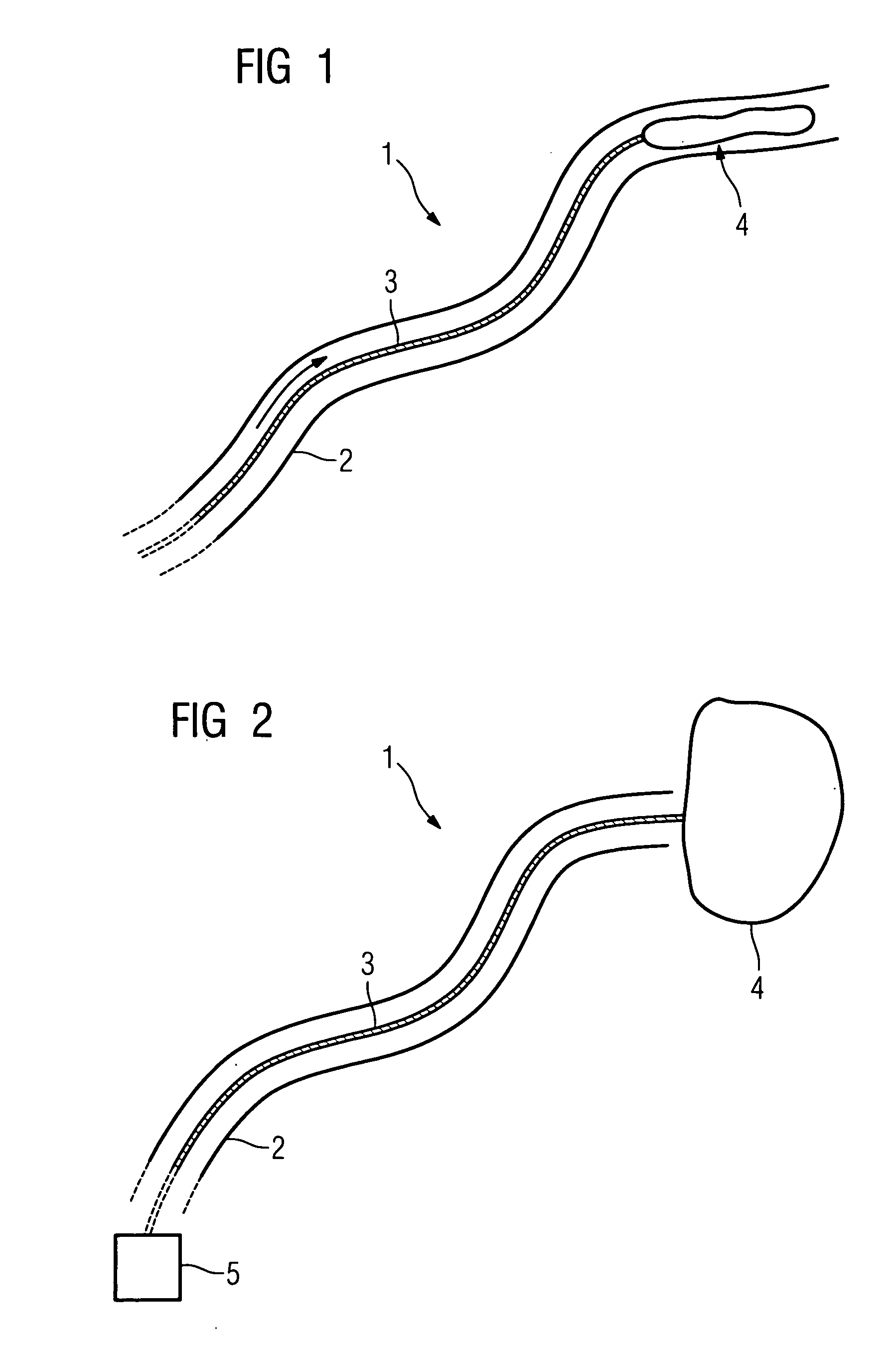Ablation catheter for setting a lesion
a technology of ablation catheter and lesion, which is applied in the field of ablation catheter for setting a lesion, can solve the problems of sustaining undesired irreparable injuries, a time-consuming and difficult process for producing linear lesion through ablation, and a patient's health risk that cannot be ignored
- Summary
- Abstract
- Description
- Claims
- Application Information
AI Technical Summary
Benefits of technology
Problems solved by technology
Method used
Image
Examples
Embodiment Construction
[0028]FIG. 1 shows schematically an inventive ablation catheter 1 consisting of the catheter sleeve 2 inside which is ducted a wire ablation element 3. Said ablation element 3 has on its front end a looped section 4 which, in the example shown, consists likewise of a thin wire. Said wire or, as the case may be, said section 4 can be folded so that it can be retracted inside the catheter sleeve 2.
[0029] The section 4 will be slid out of the catheter sleeve when the wire ablation element 3 is slid forward in the direction of the arrow shown in FIG. 1 after the catheter has been inserted into, for example, the ventricle. The resilient wire section 4 will unfold in the process and assume a closed shape imposed on it in advance, as shown in FIG. 2. Said shape will thus match as closely as possible that of the area of tissue on which ablating is to be performed, for instance the area around the pulmonary veins. That means the imposed shape of the wire section 4 can ultimately be of any k...
PUM
 Login to View More
Login to View More Abstract
Description
Claims
Application Information
 Login to View More
Login to View More - R&D
- Intellectual Property
- Life Sciences
- Materials
- Tech Scout
- Unparalleled Data Quality
- Higher Quality Content
- 60% Fewer Hallucinations
Browse by: Latest US Patents, China's latest patents, Technical Efficacy Thesaurus, Application Domain, Technology Topic, Popular Technical Reports.
© 2025 PatSnap. All rights reserved.Legal|Privacy policy|Modern Slavery Act Transparency Statement|Sitemap|About US| Contact US: help@patsnap.com



